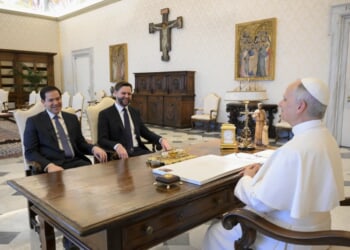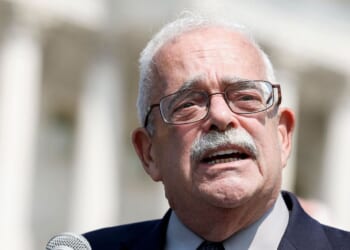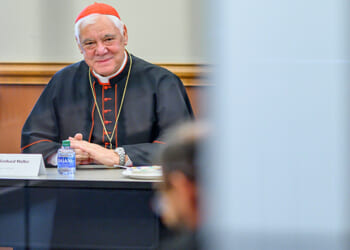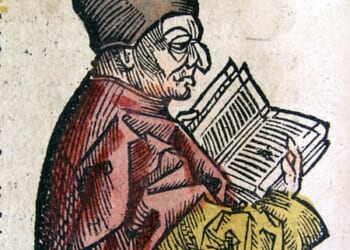A natural fighter ace, Ivan Kozhedub’s tactics were characterized by precision, aggression, and calculated risk.
Ivan Nikitovich Kozhedub, born on June 8, 1920 in the small Ukrainian village of Obrazhiiivka, emerged as one of the most formidable fighter aces of the Second World War. He is universally acclaimed by historians as the highest-scoring Allied pilot in the war. Kozhedub’s remarkable skill, courage, and mastery of the Lavochkin La-5 and the subsequent La-7 warplane made him a legend in the unfriendly skies above Europe during WWII.
Reports of Kozhedub’s early life point to a lifelong fascination with aviation. Specifically, he honed into the legend of the early Soviet aviators, like Valery Chkalov. Born into a poor rural family, the youngest of five children, Kozhedub was shaped by a strict yet intellectually curious father who encouraged reading and perseverance. At age six, Ivan learned to read and write, excelling in school before enrolling in the Shostka Chemical Technological College.
Kozhedub Helped Build the Soviet Air Force
In 1938, inspired by the various achievements of early Soviet aviation, Kozhedub joined the Shostka Flying Club, where he made his first flight in 1939 aboard a Polikarpov U-2.
This experience cemented his passion for flying. By 1940, Kozhedub was drafted into the Red Army and admitted to the Chuguyev Military Aviation School. He graduated a year later as one of the top students, and was retained as an instructor—a role that delayed his combat debut, but improved his already-excellent piloting skills.
Ever the warrior, Kozhedub yearned for frontline duty and made repeated requests of his commanders to allow for him to join his comrades fighting the Nazi invasion at the frontline.
Yet these requests were refused, and Kozhedub remained in school, training hundreds of pilots well into 1942. He was sent thereafter to Moscow to master the new Soviet warplane, the Lavochkin La-5. Finally, Kozhedub’s persistence paid off. In March 1943, he finally joined the 240th Fighter Aviation Regiment on the Voronezh Front, squaring off against the German Luftwaffe.
Kozhedub’s success as a fighter ace was inseparable from the aircraft he flew: the Lavochkin La-5 and its successor, the La-7. Designed by Semyon Lavochkin, these radial-engine, wooden-framed fighters were among the Soviet Union’s most effective aircraft, capable of matching the GermanMesserschmitt Bf 109 and Focke-Wulf Fw 190 in terms of performance.
About the Lavochkin La-5 and La-7 Fighters
The La-5 was introduced in 1942 and was a significant improvement over earlier Soviet warplanes. Powered by a Shvetsov Ash-82 radial engine, it offered a top speed of just over 400 miles per hour and excellent maneuverability (which Kozhedub put to the test).
Its armament, typically two 20mm ShVAK cannons, provided formidable firepower. The La-5’s robust construction and agility made it ideal for the intense dogfights of the Eastern Front. Kozhedub began flying the La-5 in March 1943, quickly mastering its capabilities despite a rocky combat debut where his plane was heavily damaged by a German Bf 109s in combat.
In August 1944, Kozhedub transitioned to the La-7, an upgraded version of the La-5. The La-7 featured improved aerodynamics, a more powerful engine (the Ash-82FN), and a top speed of around 422 mph. Its enhanced climb rate and maneuverability gave pilots an edge in aerial combat.
Kozhedub’s La-7, bearing the iconic number “27,” is now preserved at the Monino Air Museum in Russia. He described the La-7 as a “time machine”that rekindled memories of his wartime youth, underscoring his deep connection to the aircraft.
Kozhedub’s Finest Hour Came at the Battle of Kursk
Kozhedub initiated his combat career in earnest during the famous Battle of Kursk in July 1943. As it turned out, this was a remarkable time to join the frontline action. The Battle of Kursk is today widely viewed by World War II historians as a decisive turning point of the fighting on the Eastern Front.
On July 6, Kozhedub scored his first kill, downing a Nazi Junkers Ju 87 Stuka dive bomber. Over the next few days, he added two Bf 109s and another Ju 87 to his tally, demonstrating a natural talent for air combat. By October of that year, he had completed a whopping 146 missions and downed 20 enemy aircraft, earning his first Hero of the Soviet Union award.
A natural fighter ace, Kozhedub’s tactics were characterized by precision, aggression, and calculated risk. The Soviet pilot favored short, intense attacks, often driven from below and opening fire at extremely close ranges to maximize the impact of his attack.
This technique proved particularly useful against the Ju 87 dive bombers, earning Kozehdub an unmatched 18 shootdowns of the type, tying with fellow Soviet ace Arseny Vorozheykin. Though risky, this maneuver showcased his exceptional situational awareness and aerobatic skill.
But it was on February 15, 1945, in the closing months of the European Theater of WWII, where Kozhedub made real history. That was the day in which Kozehdub became the first Soviet pilot to shoot down a Messerschmitt Me 262 jet, a technological marvel of the Luftwaffe. Flying his La-7 over Frankfurt-am-Oder, Kozhedub, with his wingman Dmitry Tytarenko, outmaneuvered the jet piloted by Luftwaffe ace Karl Lange.
Tytarenko’s initial attack forces Lange to jink, allowing Kozhedub to close in and destroy the Me 262 with a well-placed burst. This victory highlighted Kozhedub’s ability to overcome superior technology through skill and teamwork.
Kozhedub’s Impressive Career Continued After the War
By the war’s end, Kozhedub had flown an astonishing 330 sorties, engaged in 120 aerial battles, and downed 62 aircraft—including the jet-powered Me 262 as well as two Fw 190s in his final battle over Berlin. Remarkably, the daring Soviet ace was never shot down, though his aircraft often returned heavily damaged. His resilience and ability to land even crippled planes underscored his piloting prowess.
After the war, Kozhedub continued his professional military career, commanding the 324th Fighter Aviation Division during the Korean War and rising to the rank of Marshal of Aviation in 1985. He also served as a deputy in the Supreme Soviet and chaired the Federation of Aviation Sports, leaving a lasting mark on Soviet aviation.
Kozhedub is still celebrated as a national hero in Russia today. He is also celebrated in Ukraine, his native homeland; the Ivan Kozhedub National University of the Air Force in Kharkiv bears his name, and streets and monuments across Ukraine honor his contributions.
Kozhedub was a real leader of men and an aviation pioneer. While he may have fought for the wrong side in the Cold War, he was likely the greatest fighter ace of all the Allied air forces during the Second World War.
About the Author: Brandon J. Weichert
Brandon J. Weichert, a Senior National Security Editor at The National Interest as well as a contributor at Popular Mechanics, who consults regularly with various government institutions and private organizations on geopolitical issues. Weichert’s writings have appeared in multiple publications, including the Washington Times, National Review, The American Spectator, MSN, the Asia Times, and countless others. His books include Winning Space: How America Remains a Superpower, Biohacked: China’s Race to Control Life, and The Shadow War: Iran’s Quest for Supremacy. His newest book, A Disaster of Our Own Making: How the West Lost Ukraine is available for purchase wherever books are sold. He can be followed via Twitter @WeTheBrandon.
Image: Shutterstock / Shevchenko Andrey.

















